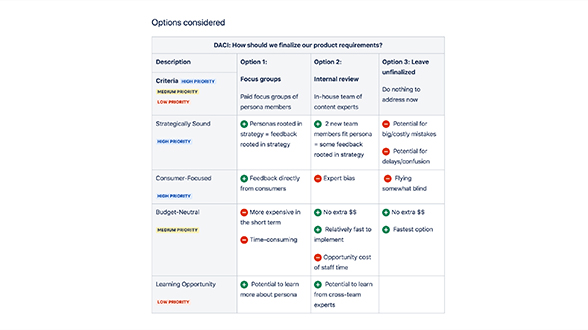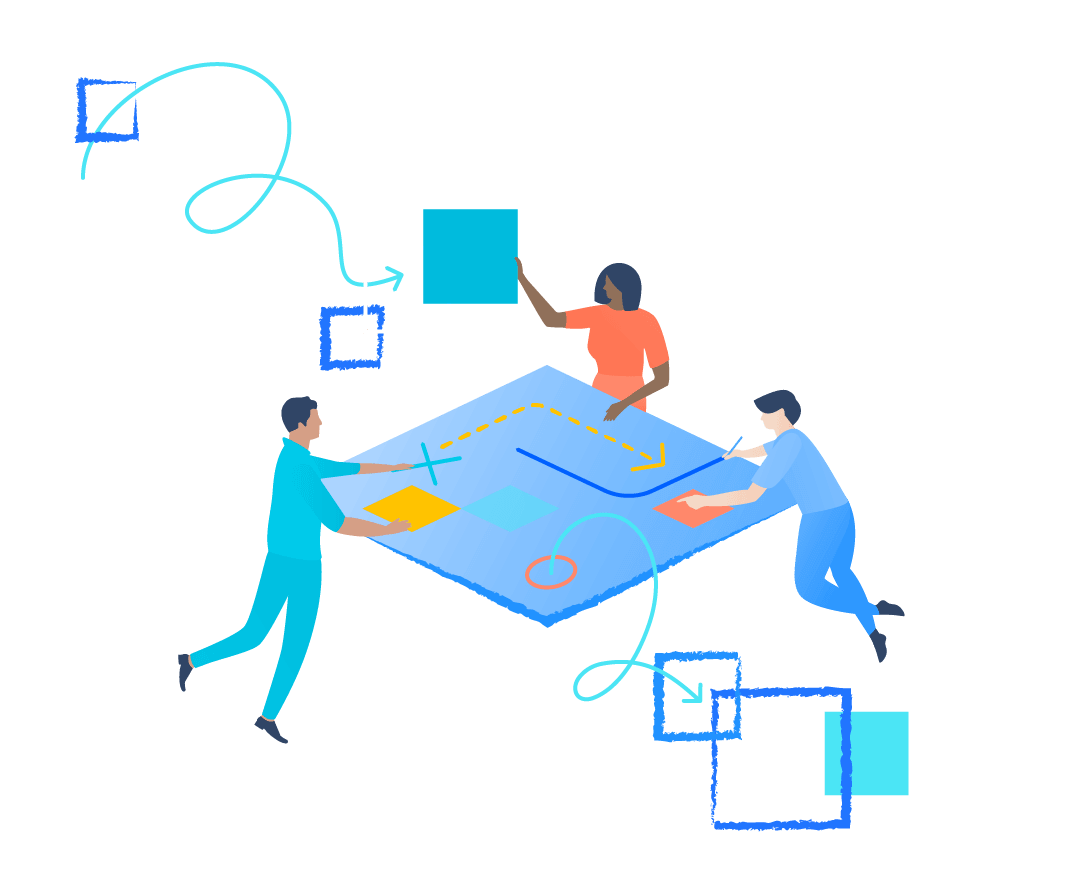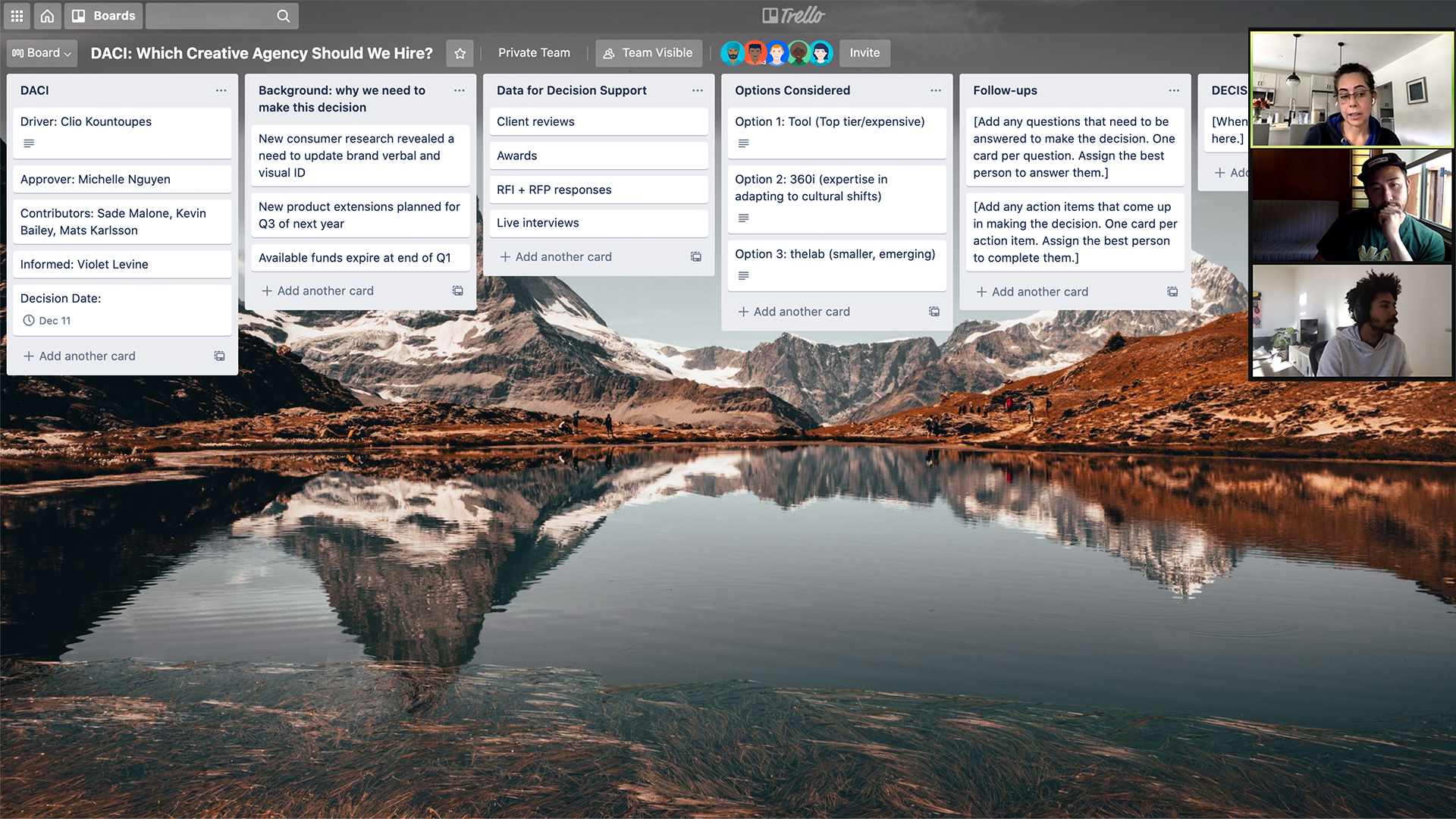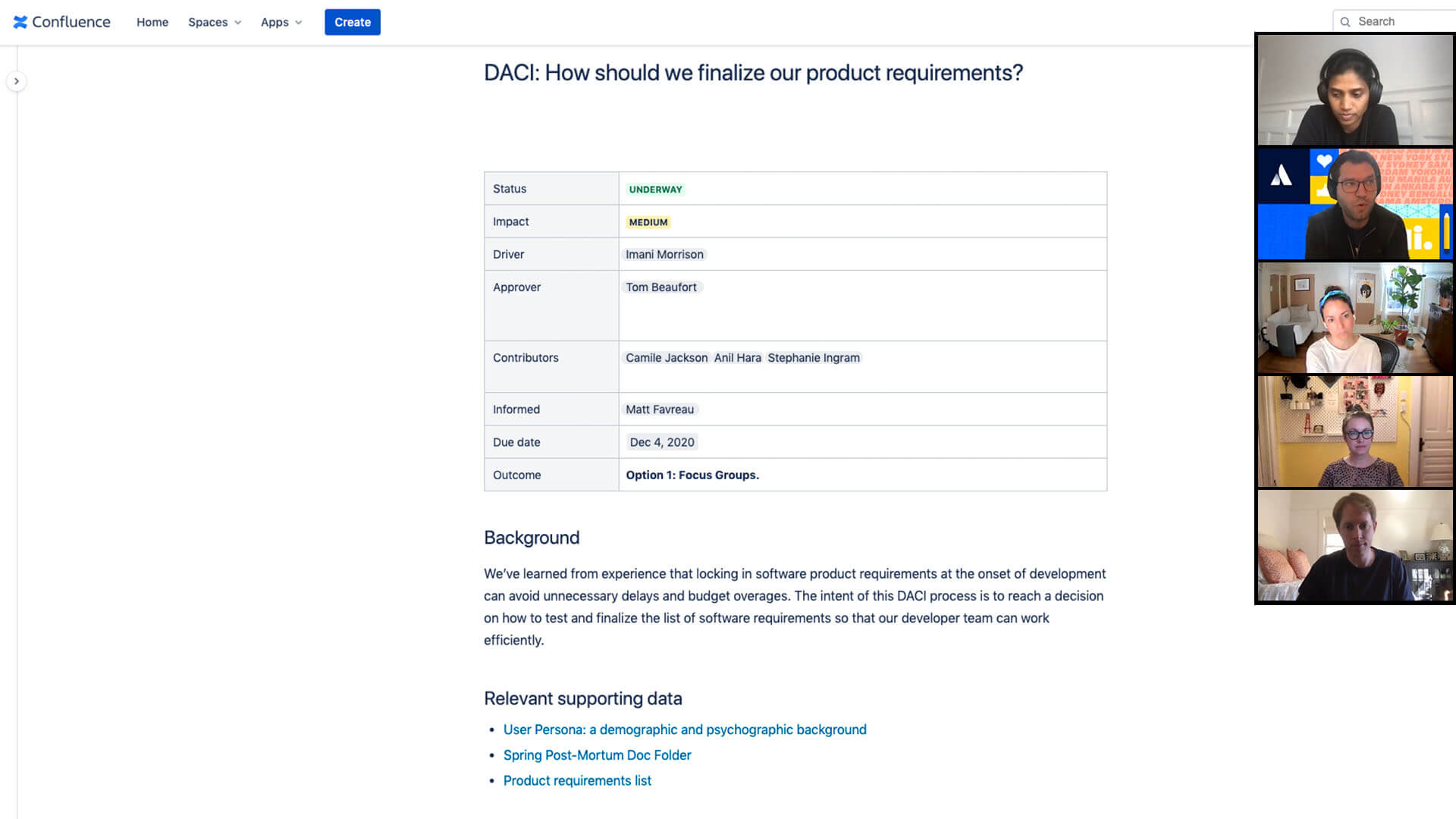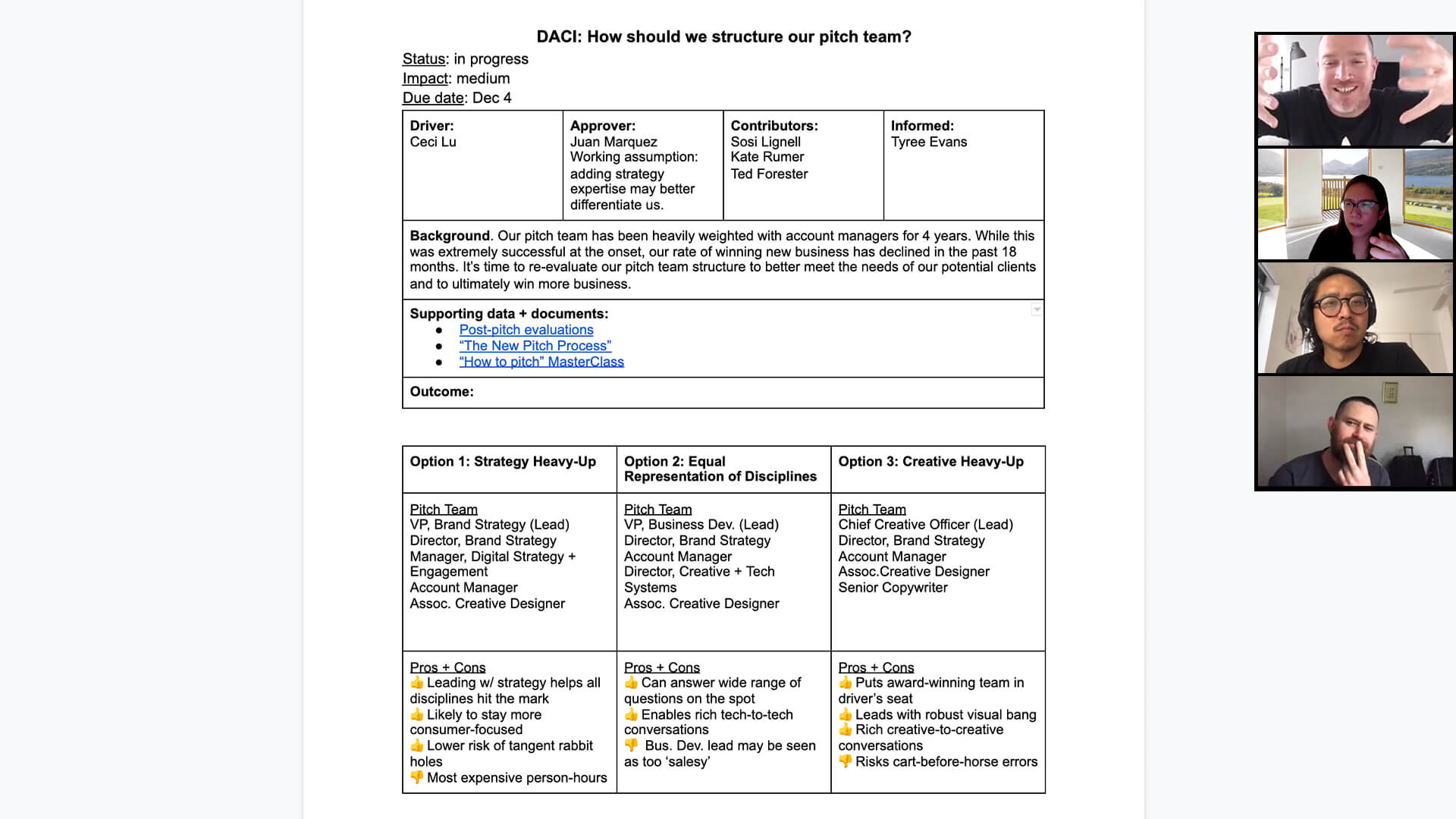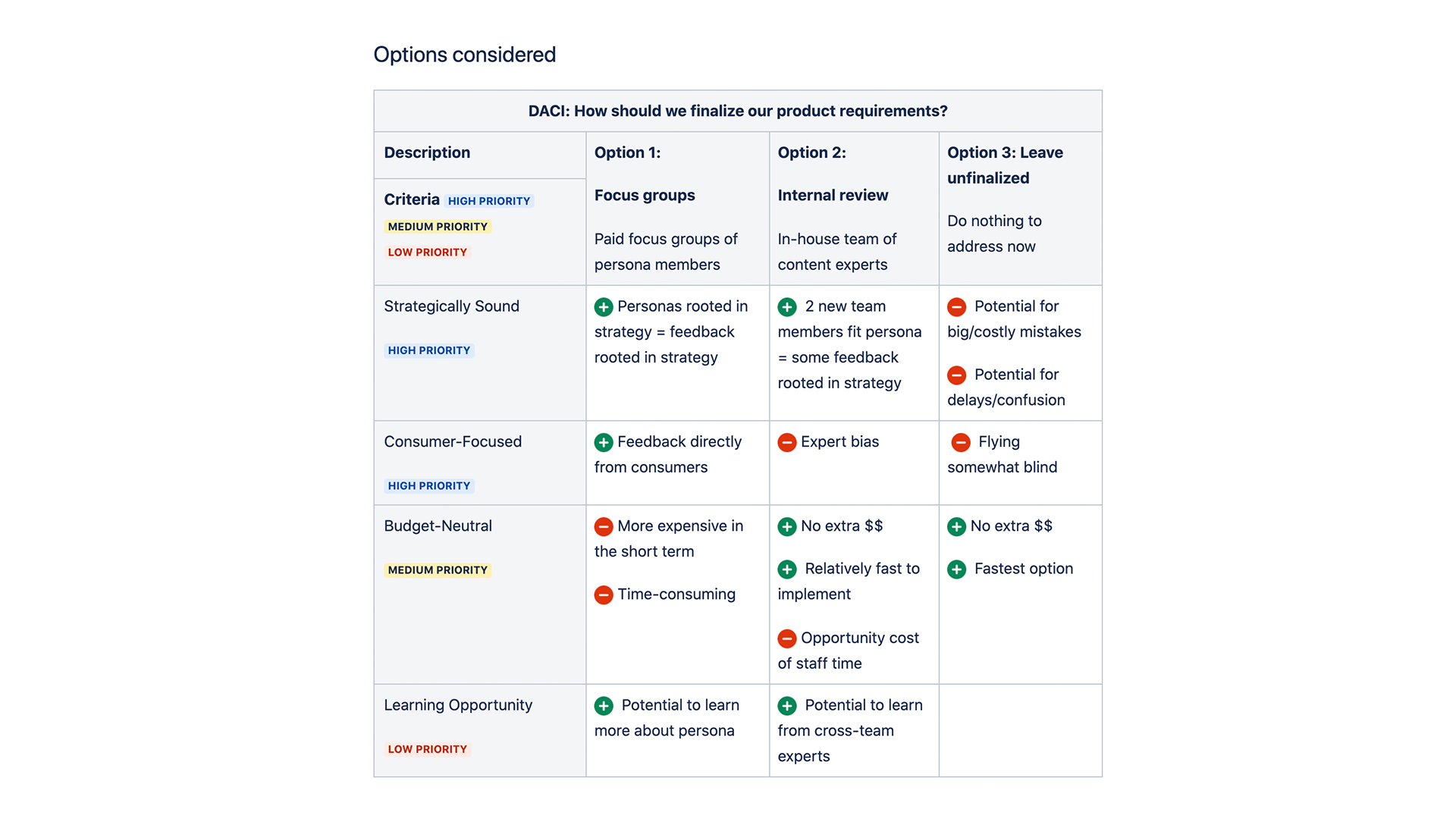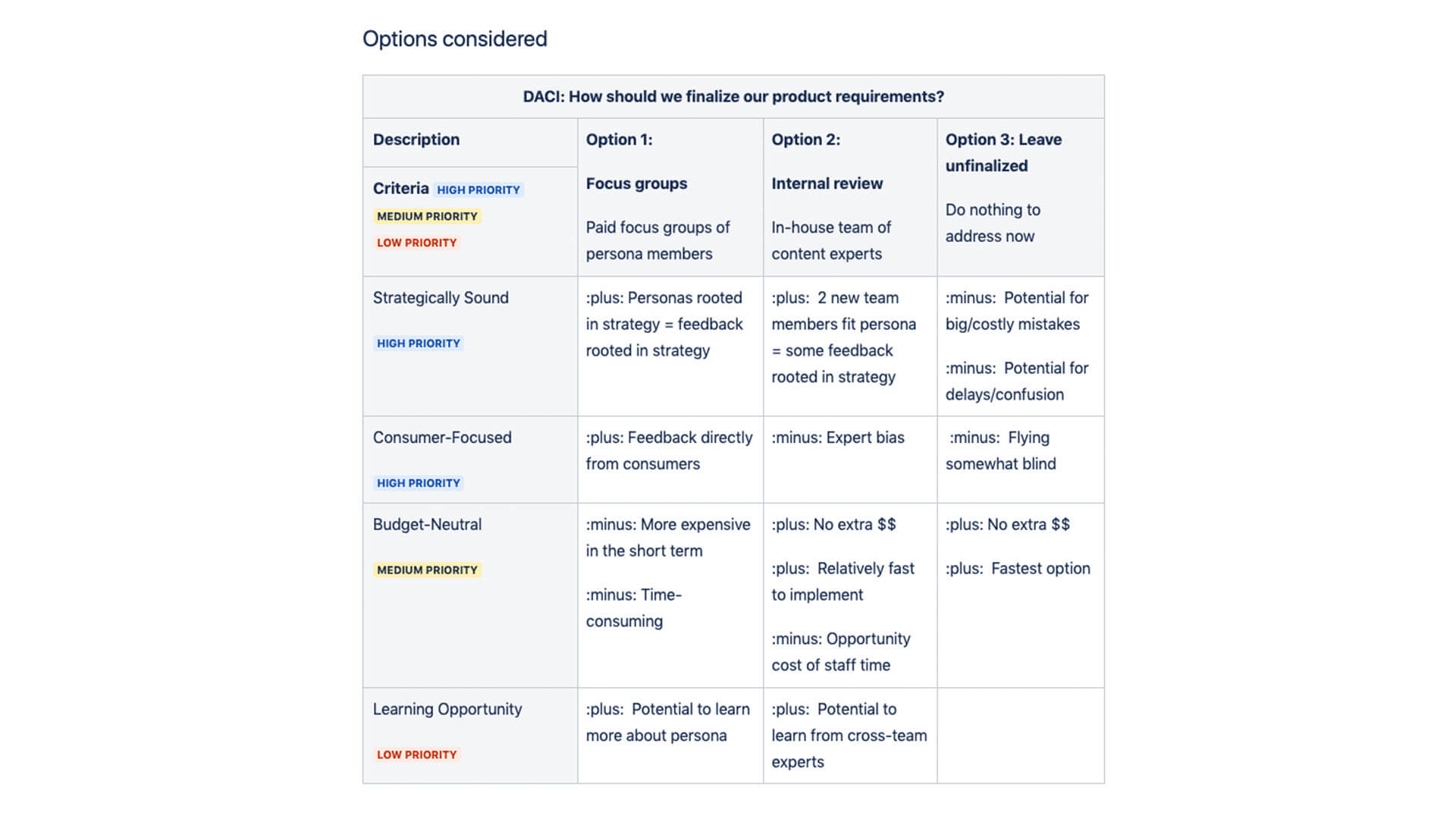What is the DACI decision-making framework?
DACI is an acronym that simplifies the decision-making process by requiring teams to define the roles and responsibilities of key stakeholders involved in the decision-making process. Here’s how the DACI acronym breaks down:
- D = Driver: The person responsible for corralling stakeholders, collating all the necessary information, determining the scope of the decision, and getting a decision made by the agreed date.
- A = Approver: The one person (yes: one!) who makes the decision. This turns the approver role from a passive “rubber stamp” into a very active “decision maker” role.
- C = Contributors: People who have subject-area knowledge and can make recommendations – i.e., they have a voice, but not a vote.
-
I = Informed: People whose work may be affected by the decision, and should be informed once it’s been made – i.e., no vote, no voice.
Why use the DACI decision-making process?
A survey conducted by McKinsey & Company found that projects utilizing the DACI framework have a 25% higher success rate in meeting their objectives and timelines compared to those that do not use the framework.
When to run a DACI Play
Run the DACI Play using our template anytime you launch a new project or encounter a roadblock in an ongoing one. Here are some additional situations where DACI is beneficial:
1. Complex decisions: Involving multiple stakeholders and departments.
-
Example: Deciding on a new product launch strategy.
2. High-stakes decisions: With significant organizational consequences.
-
Example: Making strategic market entry decisions.
3. Cross-functional projects: Requiring collaboration across different areas.
-
Example: Developing a software feature.
4. Resource allocation: Deciding on budget, personnel, or time allocation.
-
Example: Allocating the marketing budget.
5. Process improvements: Enhancing or implementing processes.
-
Example: Introducing a new project management tool.
5 benefits of the DACI framework
- Accountability: DACI clearly assigns role and responsibilities, reducing confusion and increasing efficiency.
- Improved communication: DACI keeps all relevant stakeholders in the loop and defines upfront how their inputs are considered.
- Reduced decision-making time: DACI streamlines the decision-making process, leading to faster resolutions.
- Enhanced collaboration: DACI promotes collaboration with different stakeholders and creates and environment where team are working toward a common goal.
- Higher quality decisions: DACI minimizes the risk of oversight and ensures decisions are well-informed.
What you'll need
Video conferencing with screen sharing or meeting space
Digital collaboration tool (see templates)
Optional templates
Atlassian Templates
How to use the DACI decision-making framework
5-SECOND SUMMARY
- Define and assign DACI roles
- Fill out the DACI template and related information
- Summarize and share the decisions made
1. Prep your DACI document 5 MIN
When starting a new project, it’s important to have a designated shared space where the team can collaborate effectively. Using a collaborative document like Confluence or any similar tool is essential for success.
To help you kickstart your project using the DACI framework, we have a ready-to-use template in Confluence. For the title of your document, use the format “DACI: [Question we’re trying to answer]?’

2. Assign a Driver 5 MIN
First, the team must agree on a Driver for the decision. This person will:
- Ensure all stakeholders are informed
- Gather necessary information
- Address questions and complete action items
The Driver will also facilitate the DACI meeting. They should start by reminding the team of the decisions to be made and emphasize that the goal is to develop a plan for gathering all required information to make the right decision.
3. Assign both Approvers and Contributors 5 MIN
Next, choose an Approver for the decision. This person has the final say and is typically a manager or leader with decision-making authority.
After selecting the Approver, identify the Contributors. These team members have the expertise needed to inform the decision. Choose a few knowledgeable individuals to provide supporting information.
The Driver will decide how to involve the Contributors, either by inviting them to a group meeting or connecting 1:1 to gather their input.
4. Assign who needs to be Informed 5 MIN
Under Informed, include anyone affected by the decision who isn’t directly involved in making the decision. These are people and teams who may need to change their work as a result of the decision made and will need to know the outcome. Examples include marketing, legal, sales, or support.

5. Develop an action plan 10 MIN
Now it's time to set the stage and provide context. Complete entire DACI confluence teamplate, except for the Action Items and Outcome sections, which come during and after the process, respectively.
The Driver will introduce the information that needs to be collected to make the decision such as:
- Details: This should include the current status, impact, all people involved, due date, and the outcome once decided.
- Background: Write a 1–2 sentence explanation of what the considerations are and what decision needs to be made. Briefly speak to the importance of the decision and what it will impact.
- Relevant data: Include any relevant research, data, or feedback that could affect the business and should be considered in making the decision.
- Decision factors: Include the factors you will consider when evaluating each option, such as cost, time, and scalability.
Options considered: Use a table format to present each option, including description, pros and cons, and estimated resources and financial costs.


6. Gather input and make decisions 10 MIN
Start sharing your DACI with the team and ask them to contribute their thoughts. Working together, sharing ideas, and perhaps engaging in a bit of healthy sparring can help to thoroughly explore your options.
7. Organize action items 10 MIN
What else do you need to move forward? In the Action Items section, list the information, tasks, or questions that need to be addressed before completing this part of the project. Assign team members to each action item by @mentioning their names.

8. Share the outcome 10 MIN
After the team has weighed in, it’s time to let your Approver make the call. Once that’s done, be sure to summarize and share the outcome so the team knows.

Variations
RACI
The RACI framework is similar to DACI, with a slight change in acronym: Responsible, Accountable, Consulted, and Informed. Responsible is those who will complete the work. Accountable is the final approver of the work. Consulted and Informed are the same.

Force-field analysis
Determine what’s working for or against your decision with a force-field analysis. Score these items based on strength to determine what options are available and the cost-benefit of each.

Follow-up
Once a decision has been reached, document the final decision in your collaboration document. This will help provide context to future teams on how and why the decision was reached.
From our team, to yours
Stay up-to-date on the latest Plays, tips, and tricks with our newsletter.
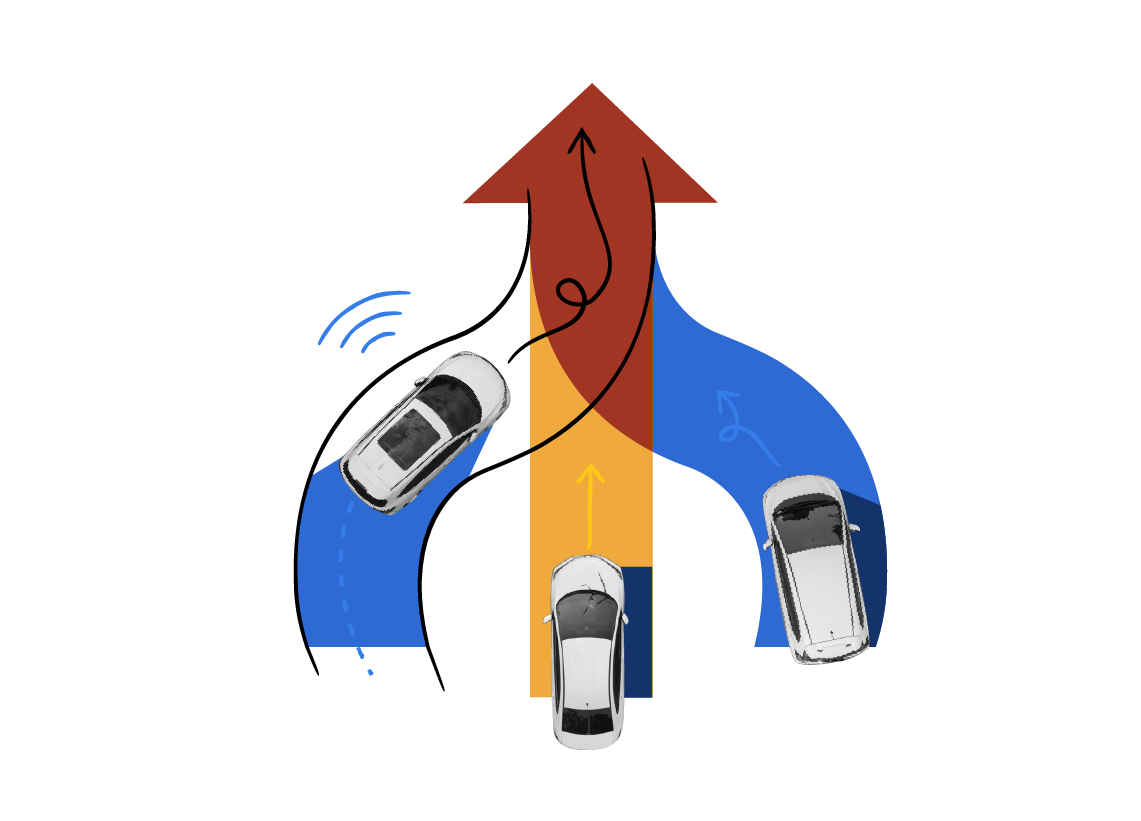
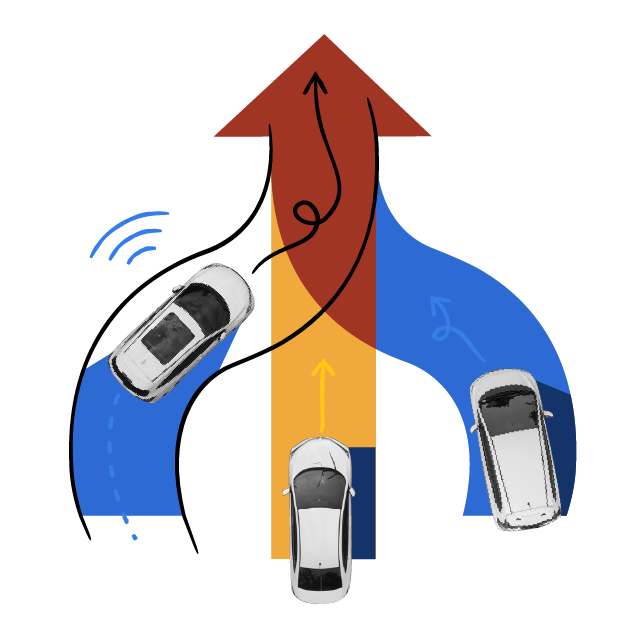
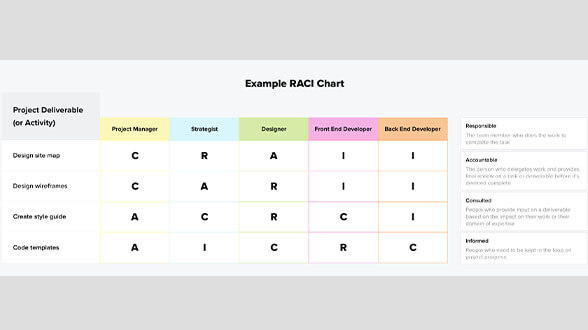.jpg?cdnVersion=2278)
